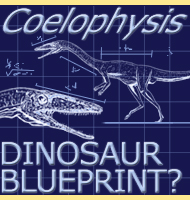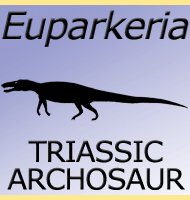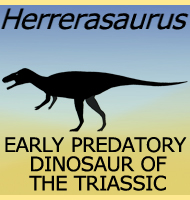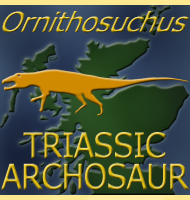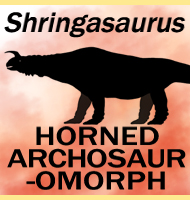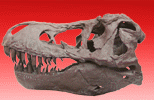


Saltopus
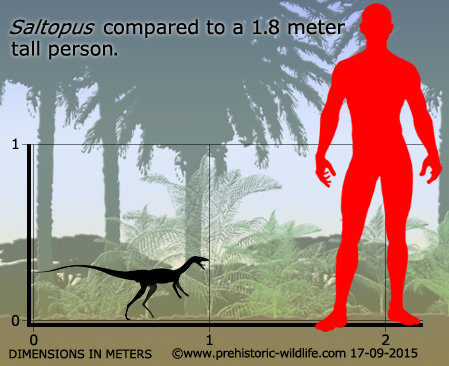
Name: Saltopus
(hopping foot).
Phonetic: Salt-o-puss.
Named By: Friedrich von Huene - 1910.
Classification: Chordata, Reptilia,
Dinosauriformes.
Species: S. elginensis
(type).
Diet: Carnivore/Insectivore.
Size: Estimated to be about 80-100 centimetres
long.
Known locations: Scotland - Lossiemouth
Sandstone Formation.
Time period: Carnian of the Triassic.
Fossil representation: Partial post cranial skeleton.
Saltopus
has had a murky taxonomic history with some researchers crediting it
with being an early theropod dinosaur, while others insist that it
was an advanced archosaur similar to Marasuchus.
Currently most
palaeontologists agree that Saltopus is most
probably a dinosauriform,
more advanced than an archosaur, but not quite a dinosaur. One
argument to support this is that the sacrum (hip) only has two
vertebrae. Some primitive dinosaurs such as herrasaurid theropods may
have three sacral vertebrae, while most more advanced dinosaurs have
between four and five sacral vertebrae, depending upon type,
development, and possible specialisation.
Though
only known from partial remains, we know that Saltopus
would have
been a very small bipedal animal with at least half of its total body
length taken up by the tail. Saltopus still had
five fingers,
though the fourth and fifth fingers were already reduced in size.
Given that most dinosauriformes of this type seem to have been meat
eaters, it has been presumed that Saltopus would
have also been a
meat eater, though no stomach contents or skull and teeth fossils
exist to confirm this. If Saltopus were a
predator, it would have
most probably hunted for small animals, such as lizards and larger
invertebrates such as beetles and scorpions.
Further reading
- Ein primitiver Dinosaurier aus der mittleren Trias von Elgin [A
primitive dinosaur from the Middle Trias of Elgin]. - Geologie
und Pal�ontologie Abhandlungen (n.s.) 8(6):317-322. -
Friedrich von Huene - 1910.
- Saltopus, a dinosauriform from the Upper
Triassic of Scotland.
- Earth and Environmental Science Transactions of the Royal Society
of Edinburgh, Volume 101, Special Issue 3-4, pp 285 -
299. - Michael J. Benton & Alick D. Walker -
2011.
----------------------------------------------------------------------------
Random favourites
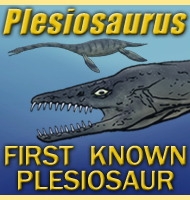 |
 |
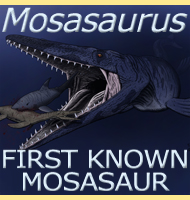 |
 |
